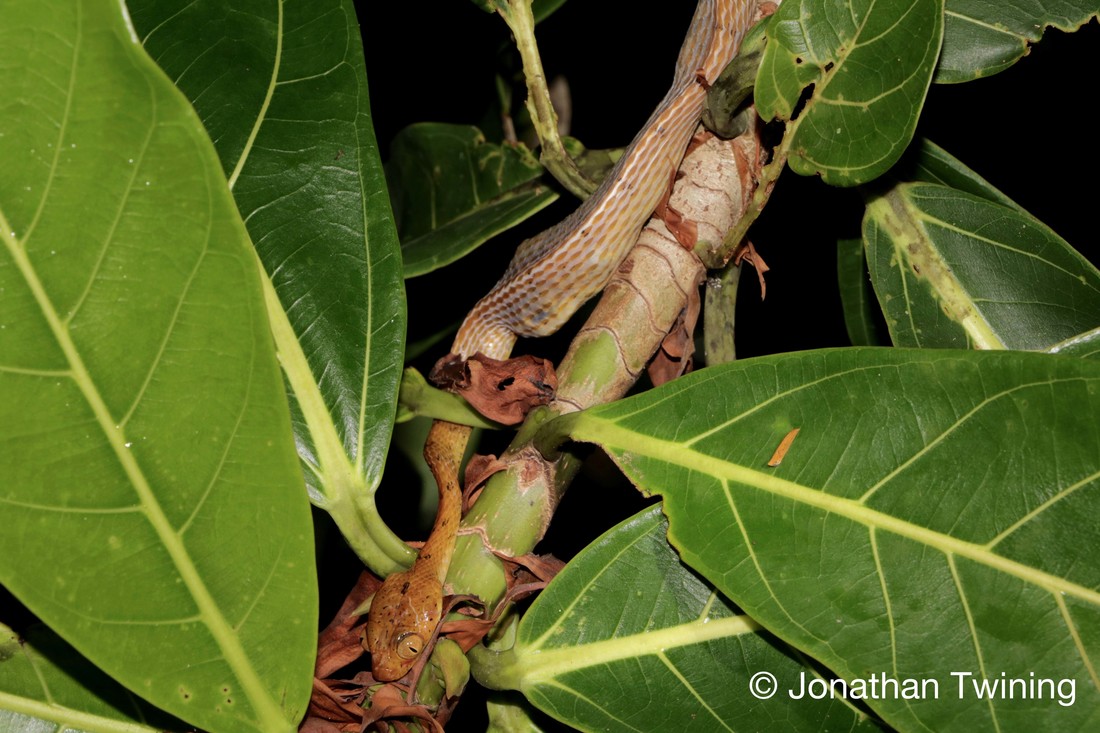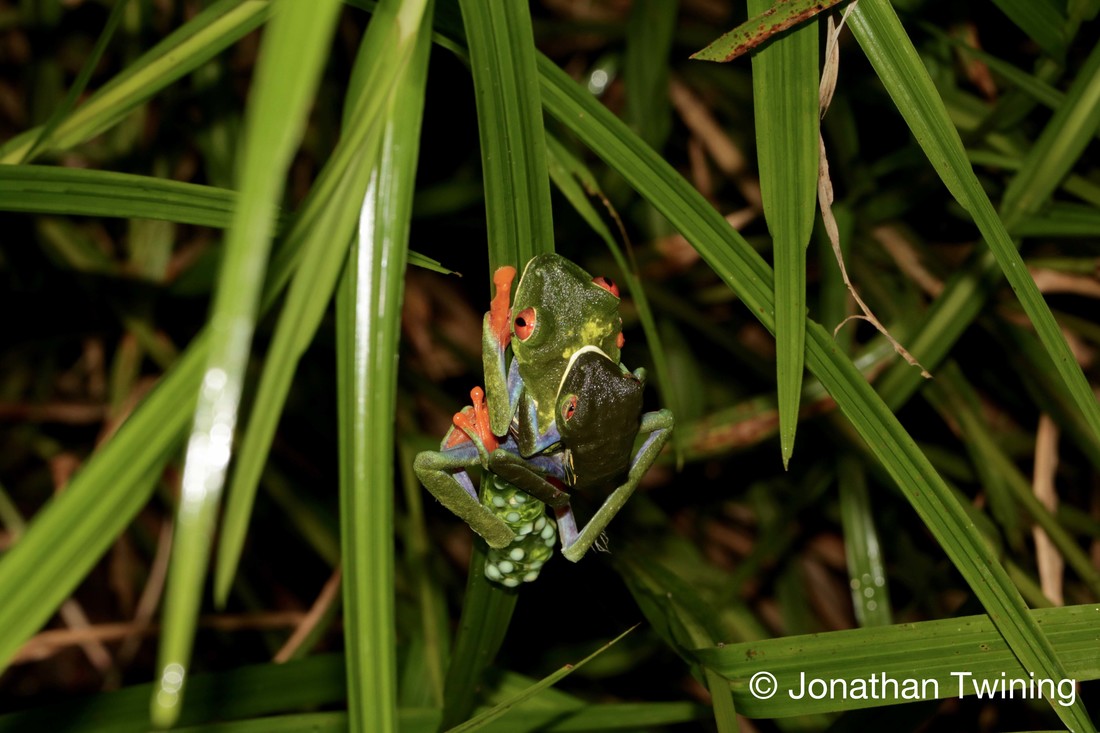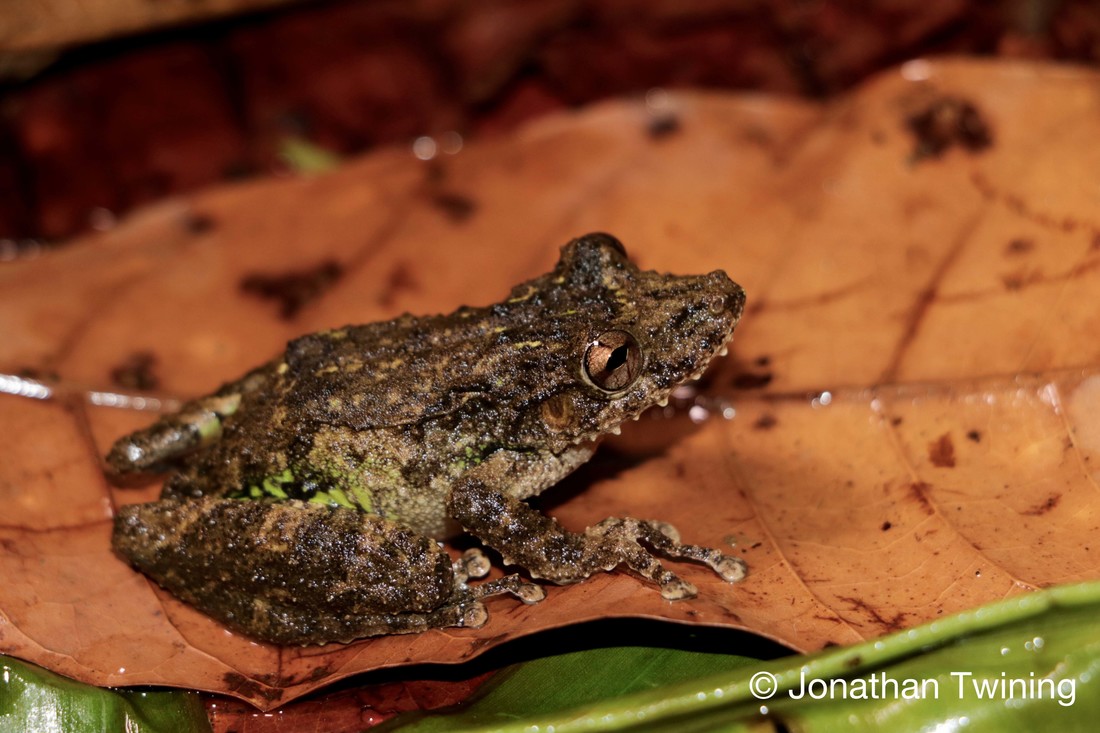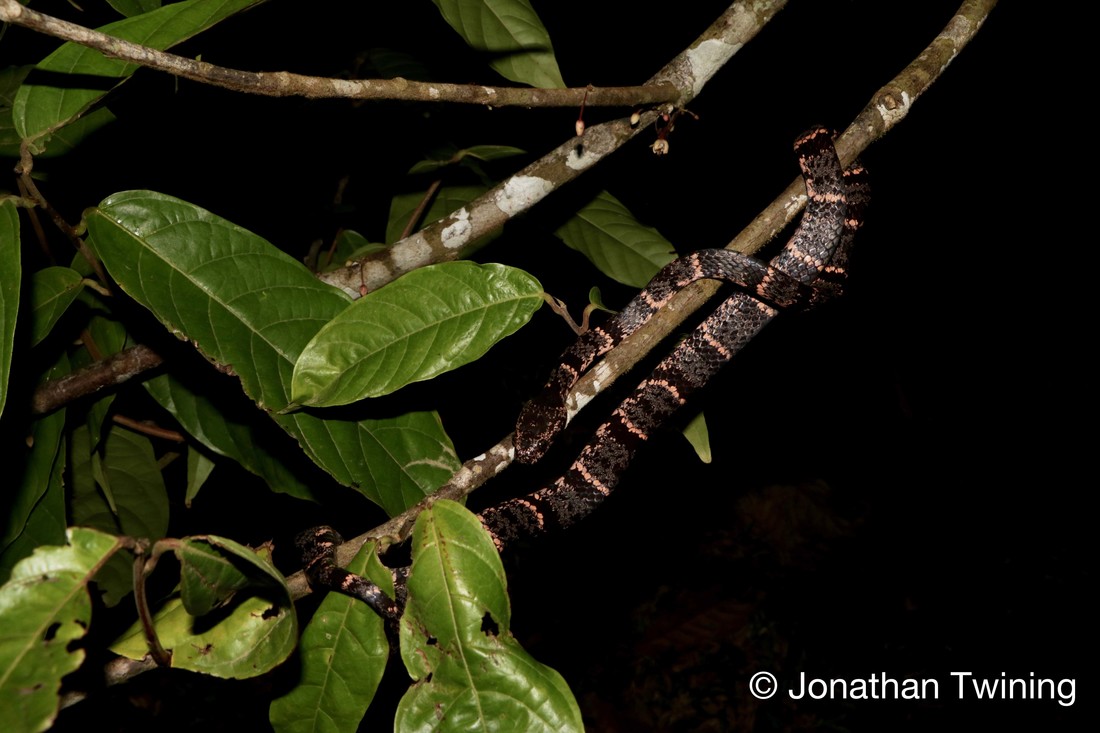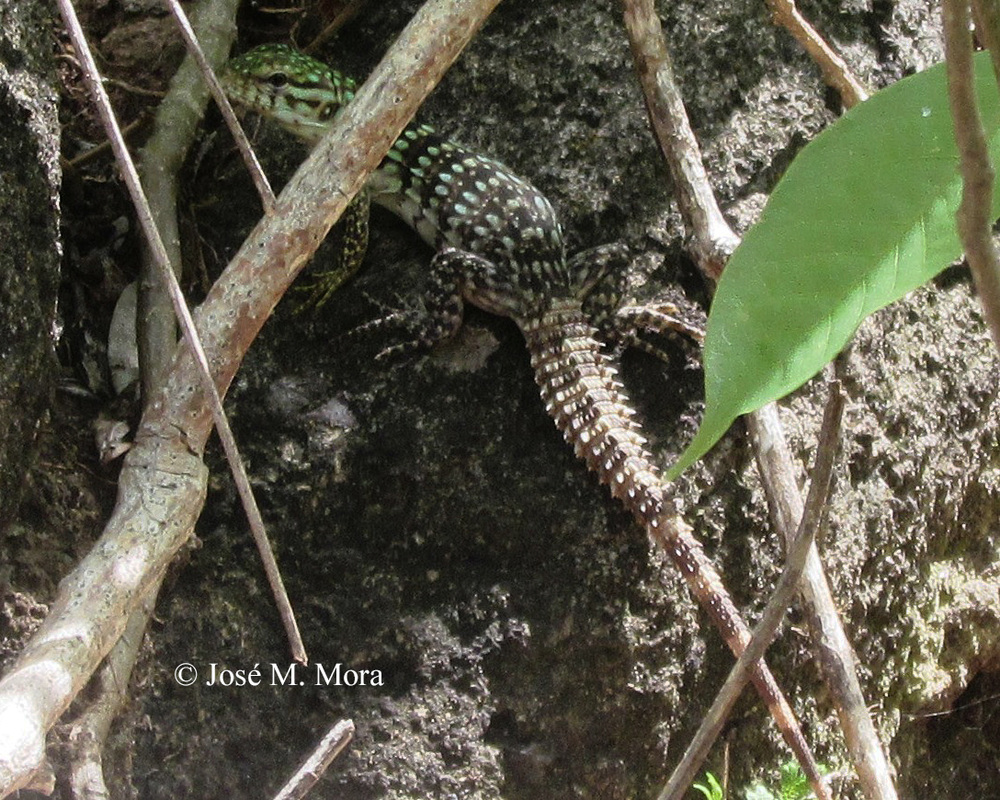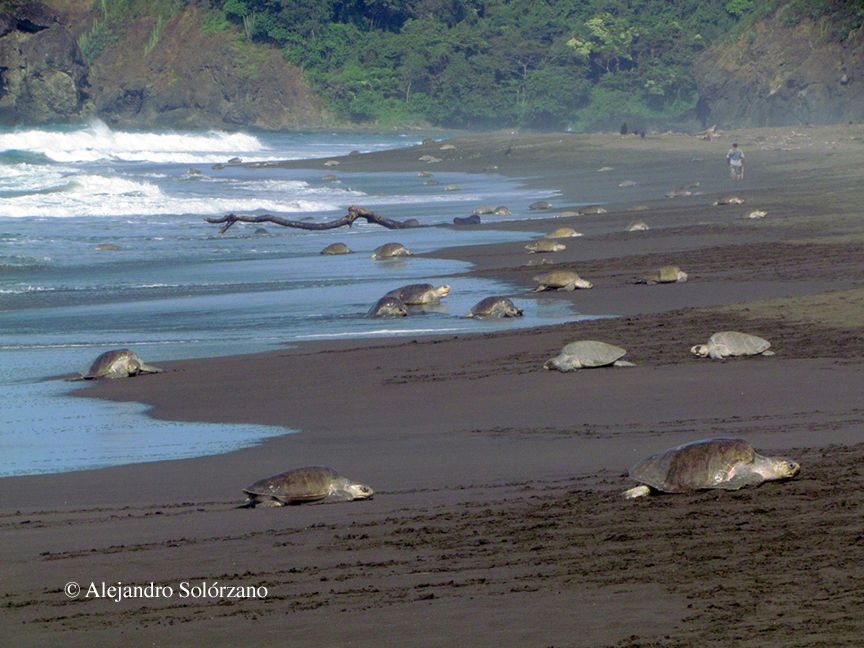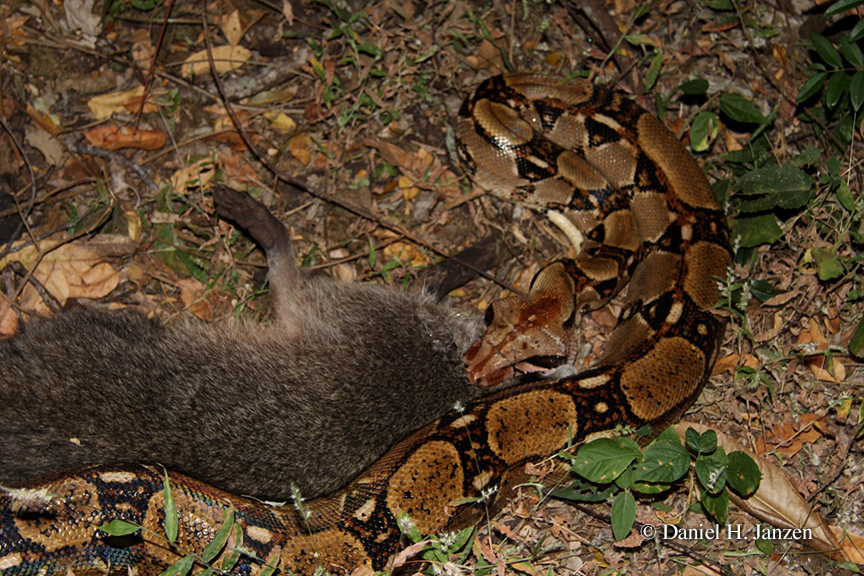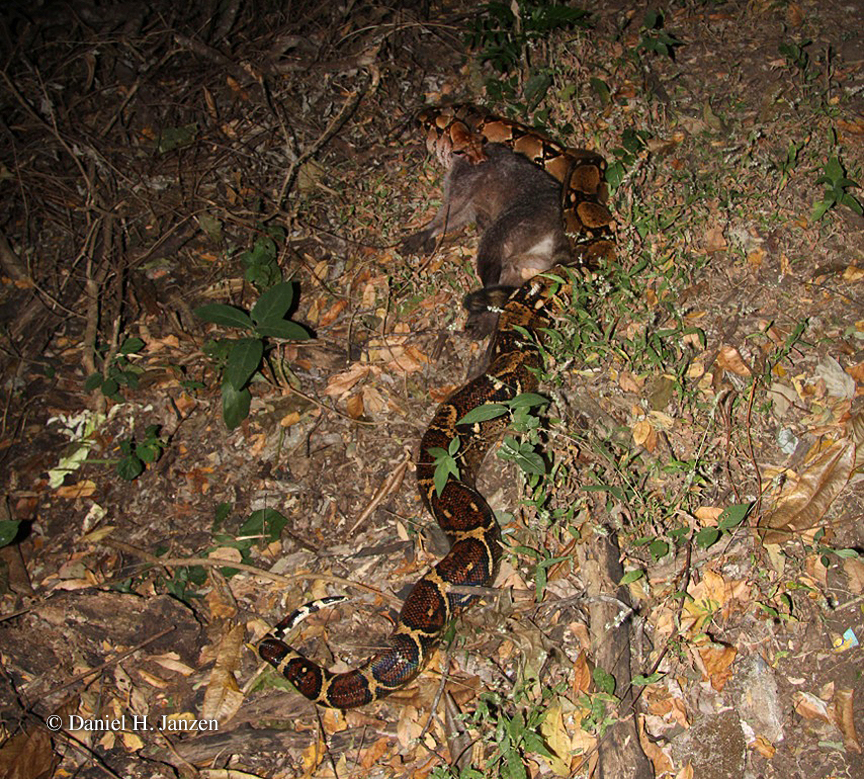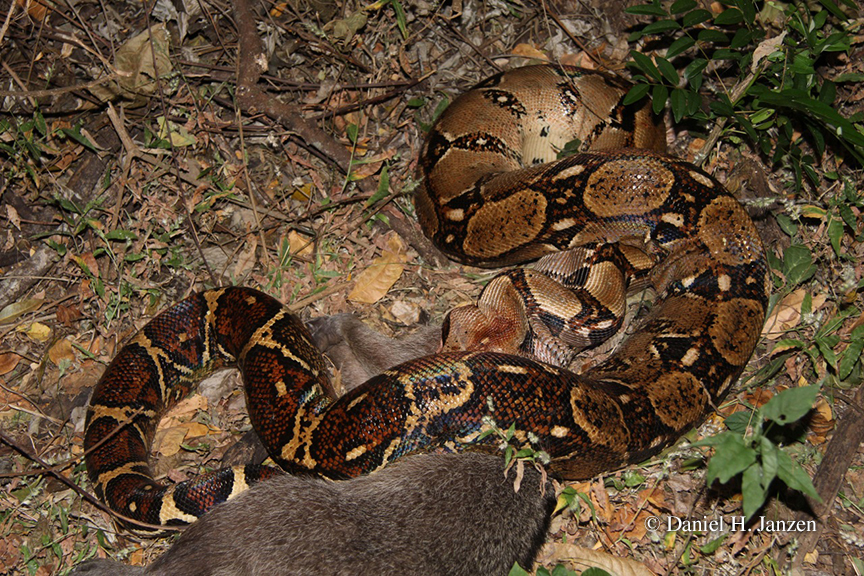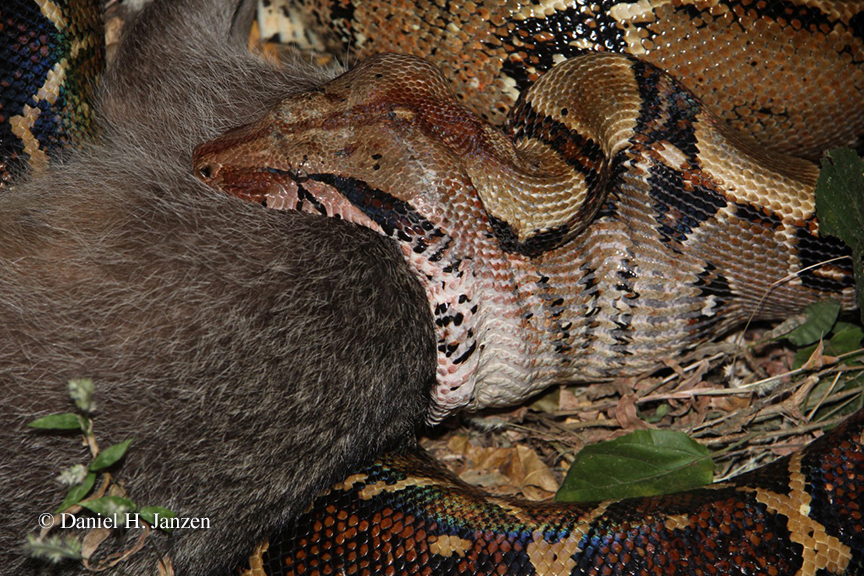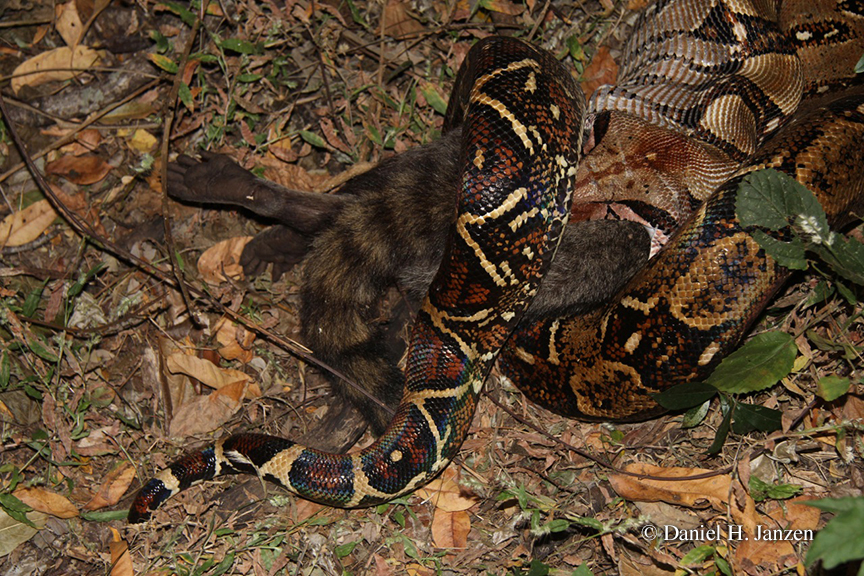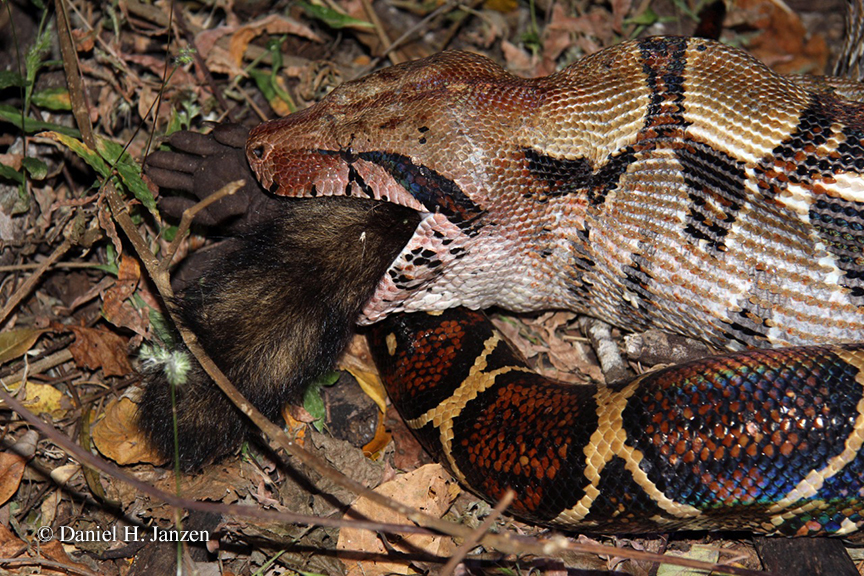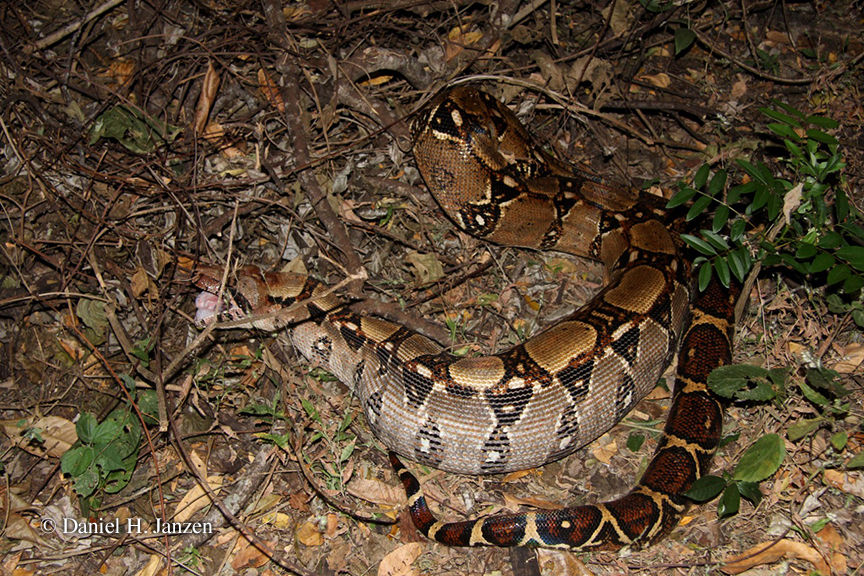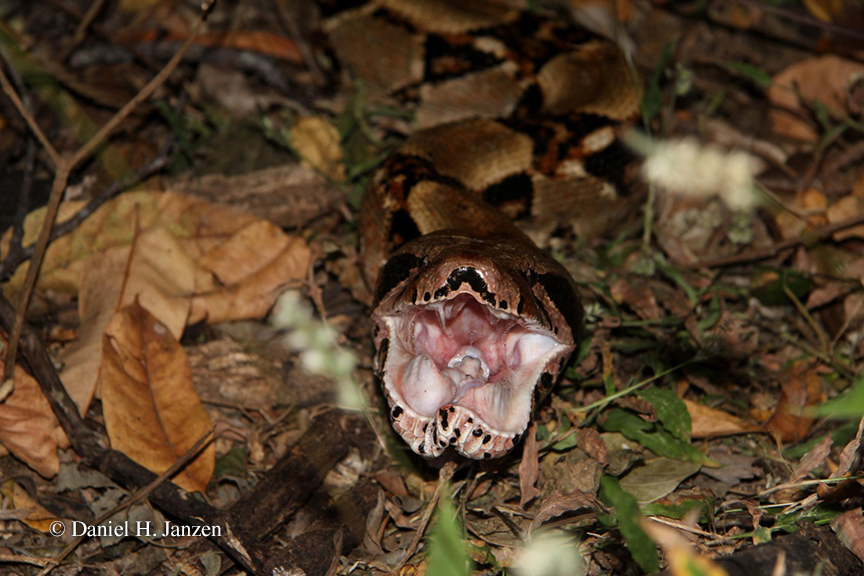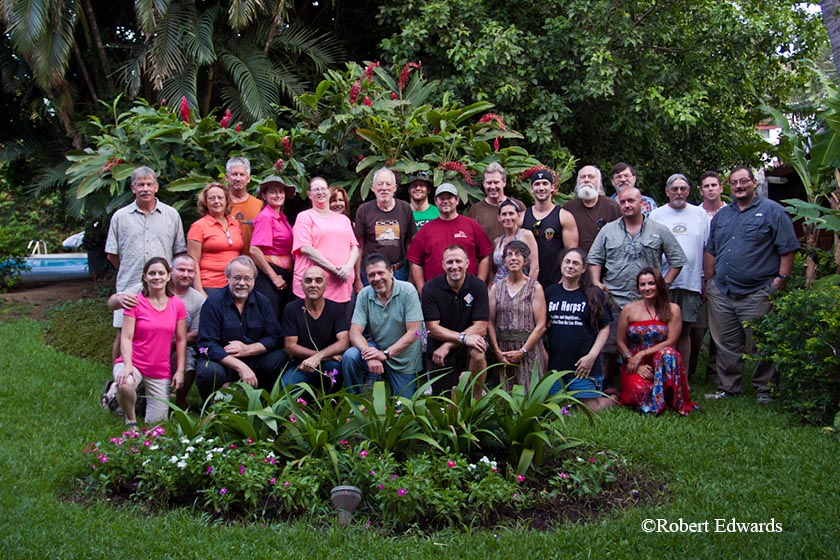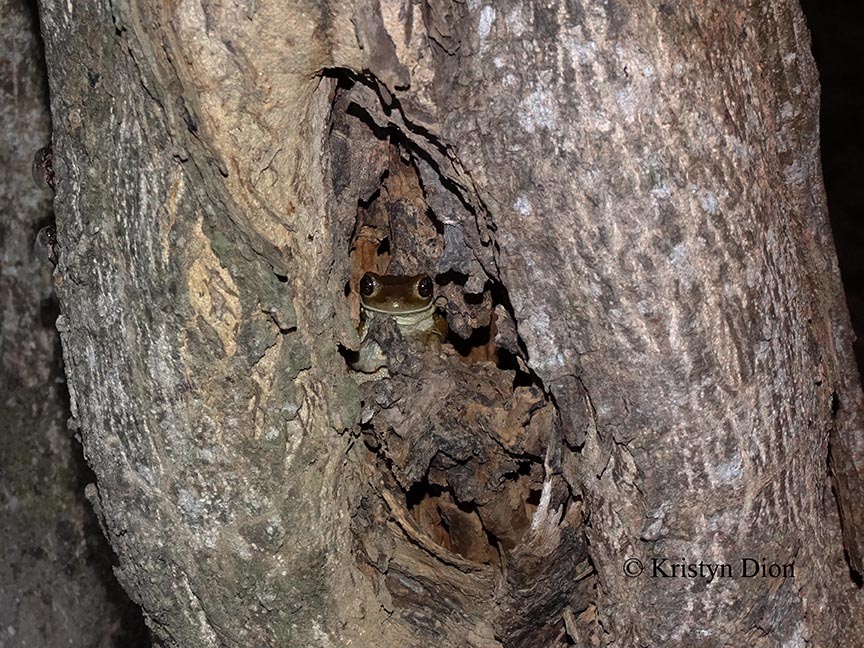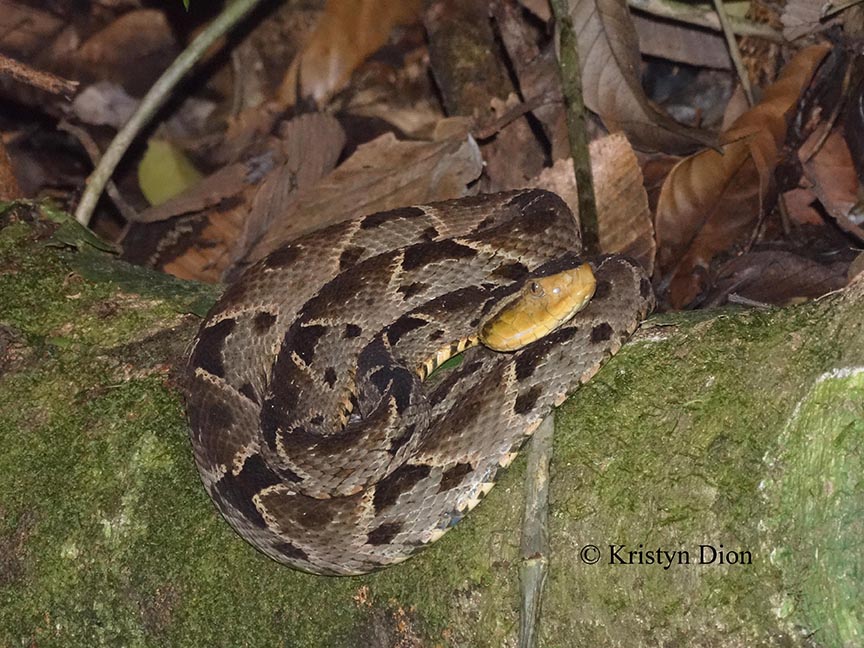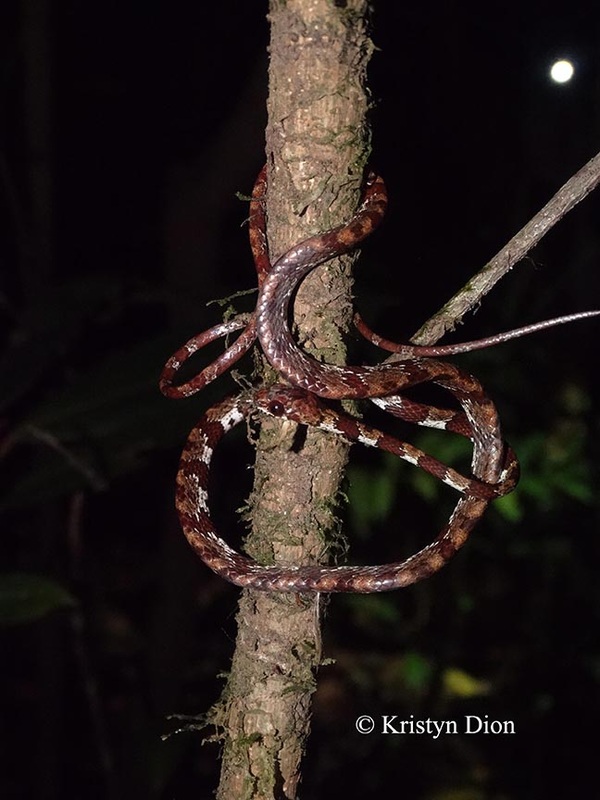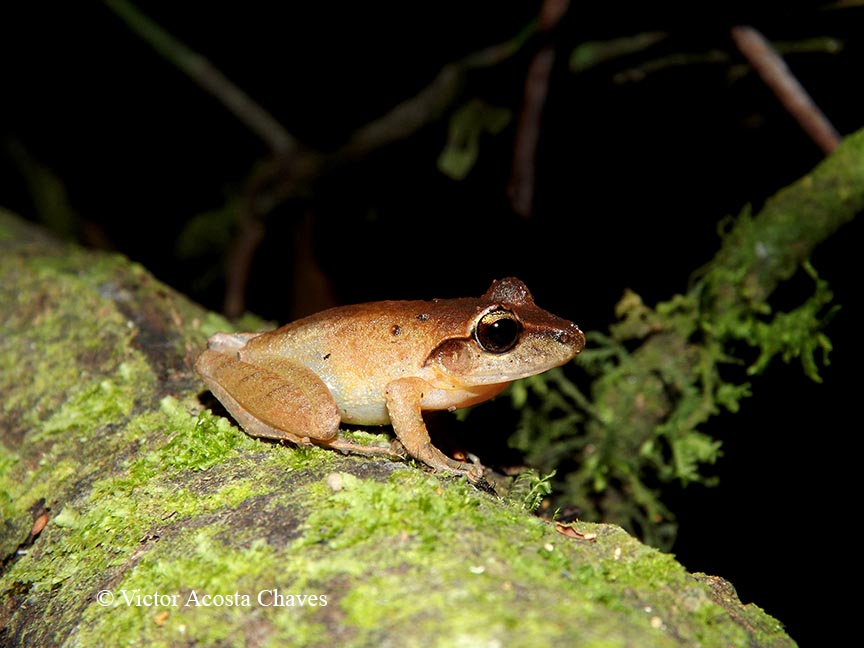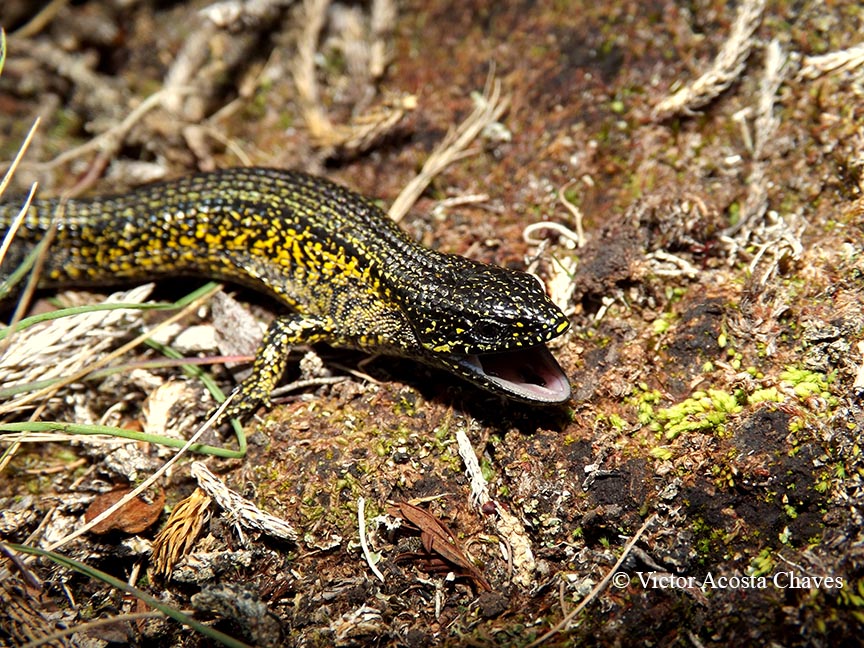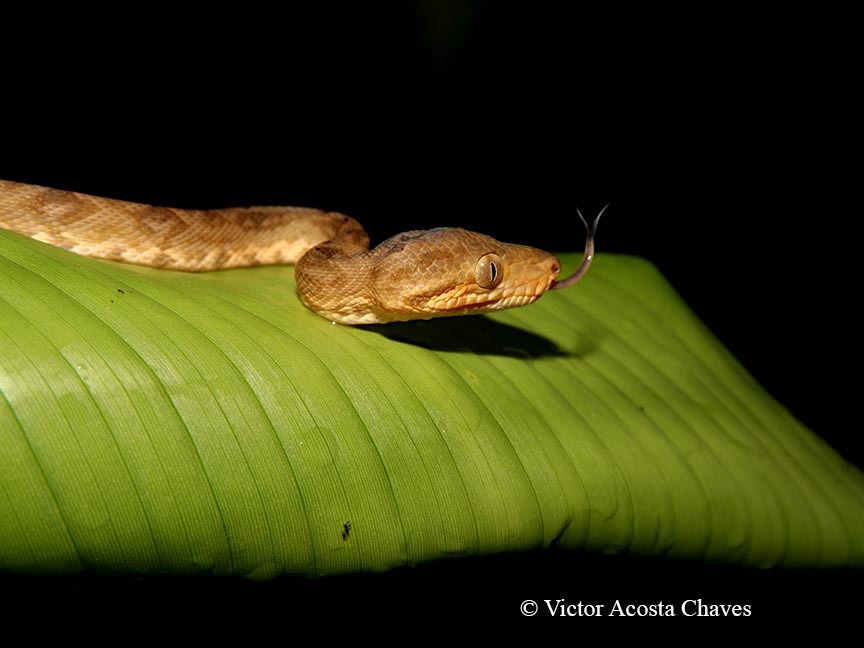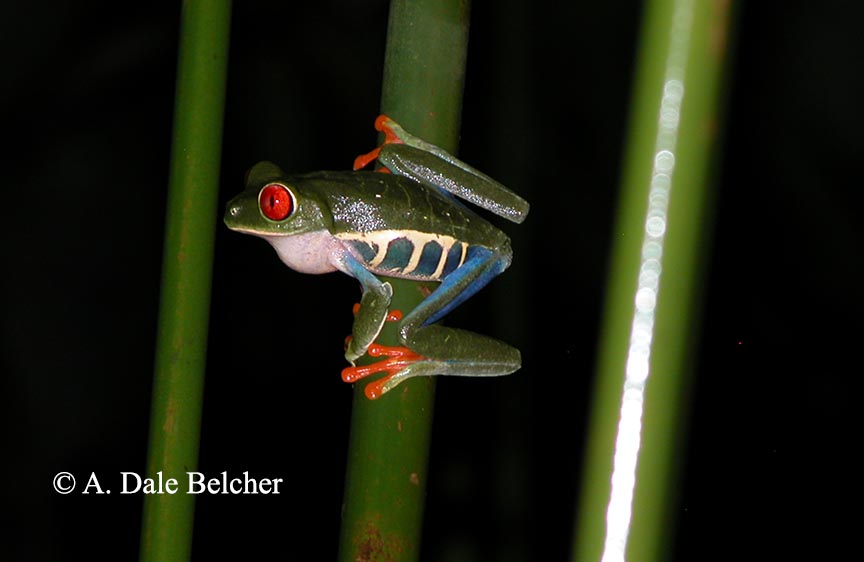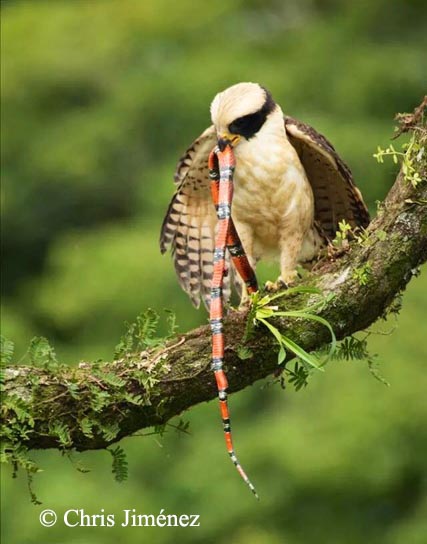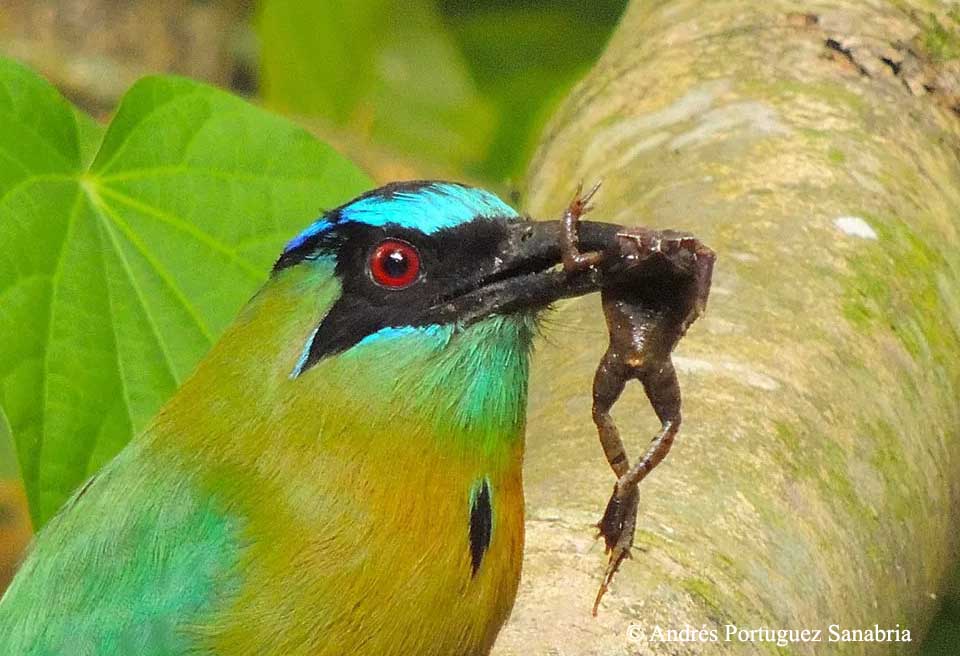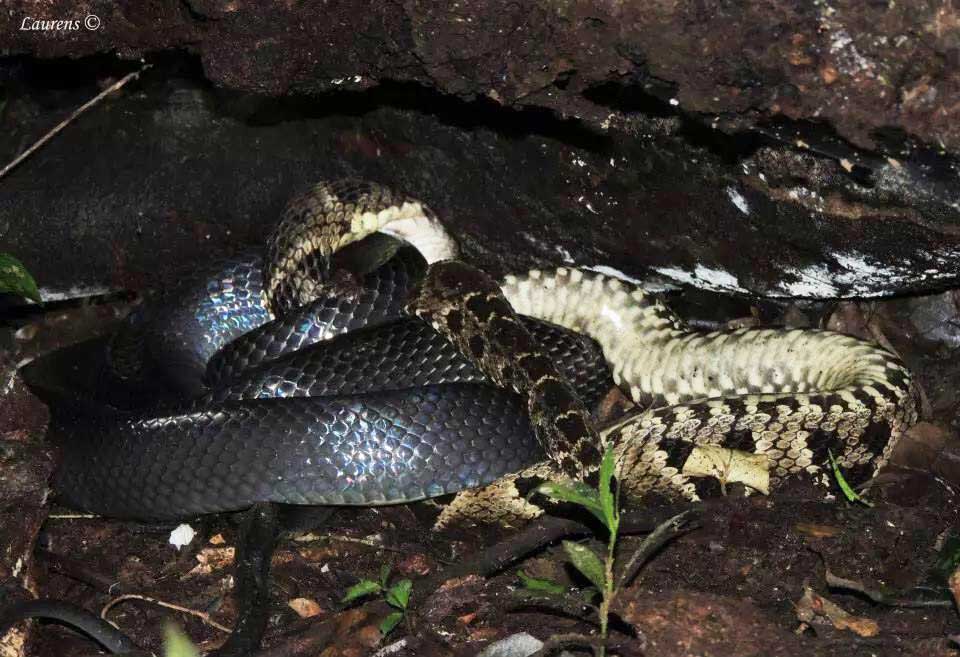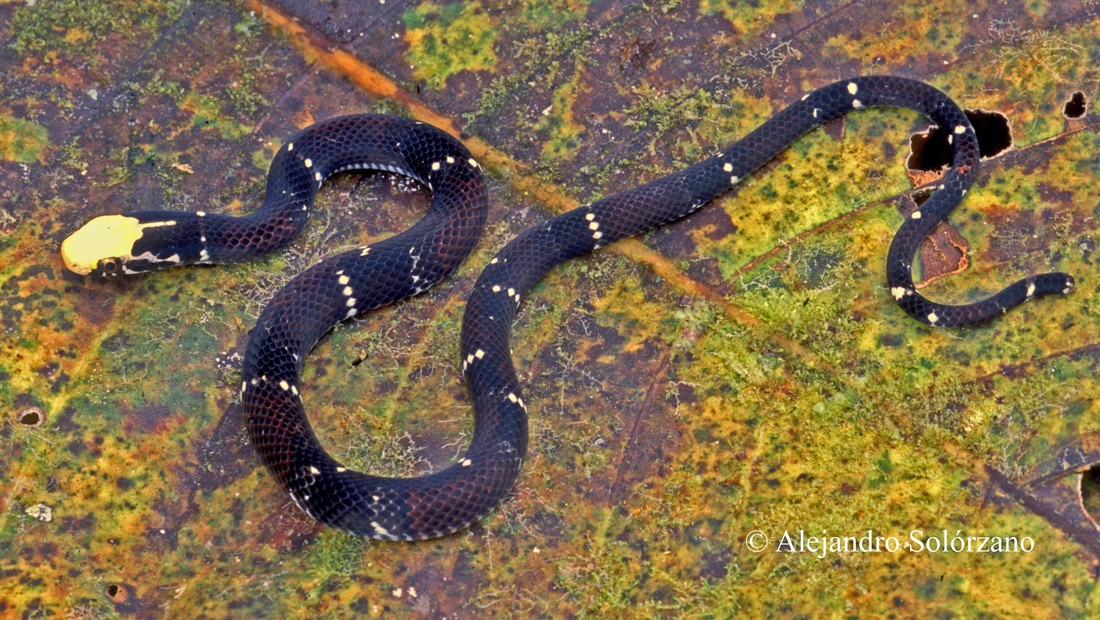Photo Gallery
A Speckled Blunthead (Imantodes inornatus) photographed just after consuming a MexicanTreefrog (Smilisca baudinii) at Pantano de Cantarrana, Estación de Investigación Biológica La Selva, Provincia de Heredia, Puerto Viejo de Sarapiquí, Costa Rica (10º26’10.59”N, 84º00’18.86”W; elev. 46 m) on 20 May 2017. The eye and snout of the frog are still visible underneath the snake’s skin.–– JET, Assistant Professor of Biology, Eastern Nazarene College, Massachusetts, United States.
A video clip of the event can be seen at the following link:
https://www.youtube.com/watch?v=Z8eITn22I_0&feature=youtu.be
A video clip of the event can be seen at the following link:
https://www.youtube.com/watch?v=Z8eITn22I_0&feature=youtu.be
A pair of Red-eyed Leaf Frogs (Agalychnis callidryas) in amplexus. The female is laying eggs on a blade of grass at Pantano de Cantarrana, Estación de Investigación Biológica La Selva, Provincia de Heredia, Puerto Viejo de Sarapiquí, Costa Rica (10º26’10.59”N, 84º00’18.86”W; elev. 46 m) on 20 May 2017.–– JET, Assistant Professor of Biology, Eastern Nazarene College, Massachusetts, United States.
A Boulenger’s Snouted Treefrog (Scinax boulengeri) observed at Centro de Aprendizaje para Indígenas (CAPI), Provincia de San José, Pérez Zeledón, Costa Rica (9º17’46.60”N, 83º46’28.49”W; elev. 690 m) on May 14, 2017.–– JET, Assistant Professor of Biology, Eastern Nazarene College, Massachusetts, United States.
A Common Snaileater (Sibon nebulatus) observed in premontane forest at the Centro de Aprendizaje para Indígenas (CAPI), Provincia de San José, Pérez Zeledón, Costa Rica (9º17’46.60”N, 83º46’28.49”W; elev. 690 m) on 14 May 2017. Two individuals at this location displayed this coloration, but a third individual found near La Selva was gray with black banding.–– JET, Assistant Professor of Biology, Eastern Nazarene College, Massachusetts, United States.
The Five-keeled Spiny-tailed Iguana (Ctenosaura quinquecarinata) is a moderately robust, medium sized member of this genus, which is equipped with five rows of armored spines on its flattened tail. This relatively uncommon lizard was photographed at Sector Santa Rosa, Área de Conservación Guanacaste, Provincia de Guanacate, Costa Rica.
Arribada of Pacific Ridley Sea Turtles (Lepidochelys olivacea) at Playa Ostional, Provincia de Guanacaste, Costa Rica.
Phrynonax poecilonotus (formerly in the genus Pseustes [see Jadin et al. 2013. Finding arboreal snakes in an evolutionary tree: phylogenetic placement and systematic revision of the Neotropical birdsnakes. Journal of Zoological Systematics and Evolutionary Research 52: 257–264]) is a widespread Neotropical species that feeds primarily on birds and bird eggs, but also is known to consume frogs, lizards, and small mammals. In captivity, adult individuals thrive on a diet of chicken eggs.
In March of 2014, we received the following video clip of a Phrynonax poecilonotus preying on a bat courtesy of Christian Zúñiga Gutiérrez (Sector Pailas, Rincón de la Vieja, Área de Conservación Guanacaste, Provincia de Guanacaste, Costa Rica): WATCH VIDEO
On 28 December 2012 an adult (+3.5 m TL) Boa imperator (formerly B. constrictor [see Reynolds et al. 2014. Toward a Tree-of-Life for the boas and pythons: multilocus species-level phylogeny with unprecedented taxon sampling. Molecular Phylogenetics and Evolution 71: 201–213]) was observed preying on an adult (weight 2–3 kg) Northern Raccoon (Procyon lotor) about 150 m from the dining hall in the administrative area of Parque Nacional Santa Rosa, Área de Conservación Guanacaste, Provincia de Guanacaste, Costa Rica. The photographs were provided courtesy of Daniel H. Janzen and Winnie Hallwachs.
The East Texas Herpetological Society held its 25th Anniversary Conference at the Hotel Boyeros, Liberia, Guanacaste, Costa Rica, from May 14th to 18th 2014. During outings at Playas del Coco, Sector Pailas, Parque Nacional Santa Rosa, and Sector San Cristobal (the last three are in the Área de Conservación Guanacaste), a total of 59 species of herpetofauna were observed (16 anurans, 2 turtles, 17 lizards, and 24 snakes). A few in situ photos taken during the conference appear below (in order of appearance, Gonatodes albogularis, Anolis cupreus, Trachycephalus typhonius, Bothrops asper, and Sibon annulatus):
The following images were sent by Victor Acosta Chaves, the I.F.R.O.G.S. scientific representative for Costa Rica.
Craugastor crassidigitus, male, from Parque Internacional La Amistad, Costa Rica.
Mesaspis monticola, male, from Cerro de la Muerte, Costa Rica.
Corallus ruchenbergerii, from Rincón de Osa, Costa Rica.
Photo courtesy of Dale Belcher, taken in April 2012 at La Selva, Costa Rica.
A Laughing Falcon (Herpetotheres cachinnans) preying on an adult Erythrolamprus bizona. Photo courtesy of Chris Jiménez, Fundación Rapaces de Costa Rica. For a website filled with incredible photographs of birds, please visit <www.chrisjimenez.net>.
A Blue-crowned Motmot (Momotus momota) preying on what appears to be a Craugastor podiciferus at Tucurrique, Provincia de Cartago, Costa Rica. Photo courtesy of Andrés Portuguez Sanabria. Check out his Facebook page: Tucurrique y su naturaleza/facebook
An adult Clelia clelia preying on an adult Bothrops asper at Buena Vista Lodge, Rincón de la Vieja, Provincia de Guanacaste, Costa Rica. The photograph was taken by Laurens Hidalgo <nephew2307@yahoo.com>, at ca. 1200 h on 6 October 2014. In this area of Costa Rica, birthing in B. asper generally takes place at this time of year, and the individual in the photo appears to be carrying young.
Scaphiodontophis venustissimus from Costa Rica is known to undergo a pronounced ontogenetic color change. Both of the individuals pictured below are from the Provincia de Limón––the first is from Guayacán de Siquirres, and the second from a hydroelectric plant in the area of Reventazón. Both specimens are deposited in the Museum of Zoology at the University of Costa Rica.

